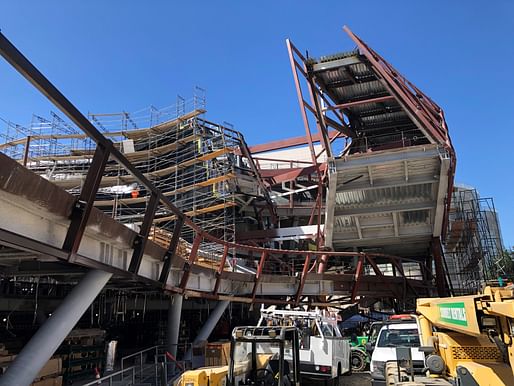

Non-residential building projects entering planning stage across the United States are showing strong signs of recovery, according to data from Dodge Construction Network. The latest iteration of the Dodge Momentum Index notes a 10% increase in non-residential building projects in planning through October 2021, breaking down into a 14% rise in commercial project planning, and a 3% rise in institutional project planning.
Following poor levels of activity throughout the summer of 2021, the value of non-residential building projects entering planning stage has now surged to the highest level in 14 years in the Dodge Momentum Index. The index is now 47% higher than this time last year, with commercial planning sitting 59% higher, and institutional planning 26% higher. Dodge believes the increases are being driven by higher planning activity for warehouses, offices, and healthcare structures.

Throughout October 2021, a total of 20 projects with a value of more than $100 million entered planning, including a $450 million Walmart Distribution Center in Lyman, SC, and a $400 million Facebook data center in Los Lunas, NM. Key institutional projects which entered planning last month included the second and third phases of the California Northstate University Medical Center in Sacramento, CA, with each phase valued at $500 million.
As a word of caution, Dodge note that the increased value and activity in future non-residential projects should be balanced against ongoing obstacles, including material costs, a shortage of key goods, and a lack of skilled labor in construction.
The latest data from Dodge comes weeks after the organization also found that total construction starts across the United States rose 10% in one month despite pandemic disruption, with gains across both residential and non-residential sectors. The latest Architecture Billings index from the AIA also shows positive movement within the AEC industry, marking eight consecutive months of increasing architecture billings.
Despite the string of optimistic reports, there are continued warning signs that the AEC sector will be impacted by labor shortages in 2022. For instance, a chief economist at the Associated Builders and Contractors recently warned that with the construction industry’s unemployment rate back below 5%, the cost of labor will become increasingly more expensive throughout next year.
Separately, a report by the AIA recently found that architects’ compensation has not kept pace with the broader economy, with the 0.3% average annual increase in architectural salaries since 2019 lagging behind the 3.1% average increase across the U.S. private sector.
No Comments
Block this user
Are you sure you want to block this user and hide all related comments throughout the site?
Archinect
This is your first comment on Archinect. Your comment will be visible once approved.